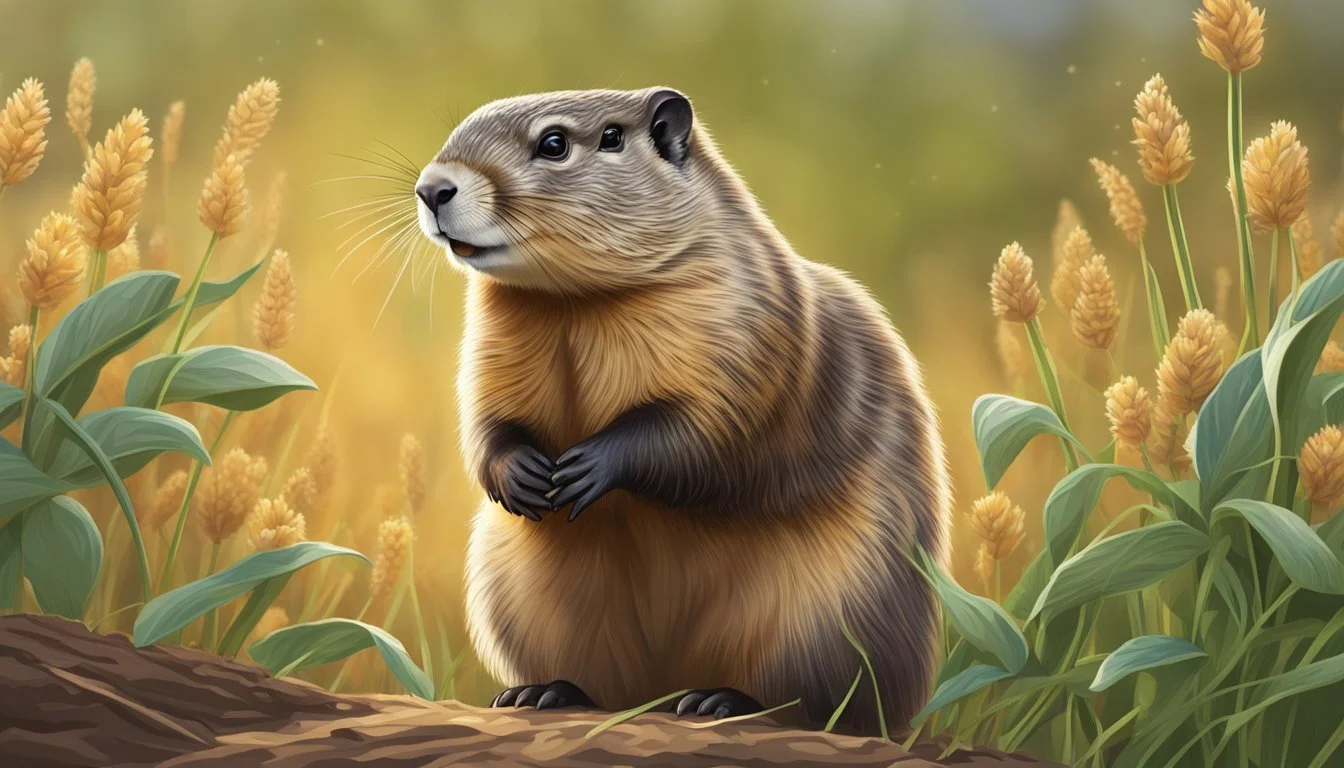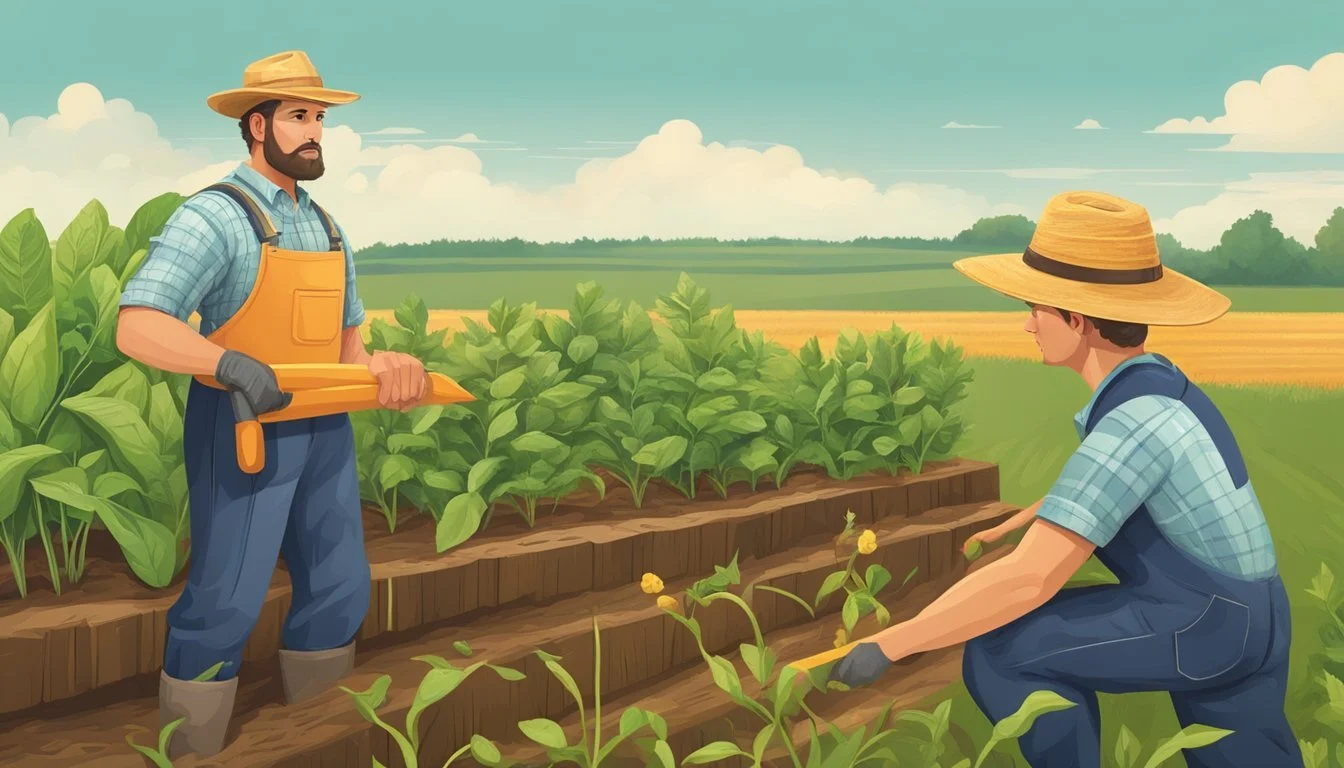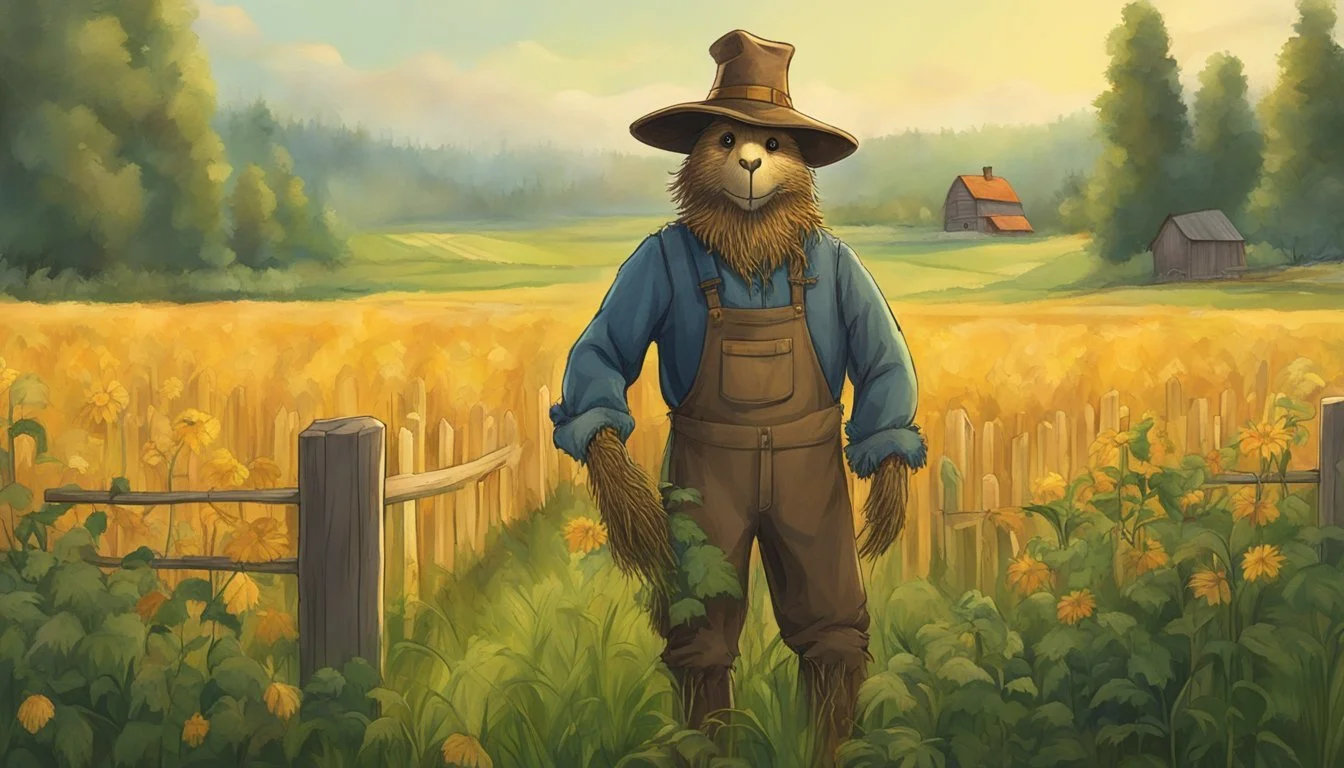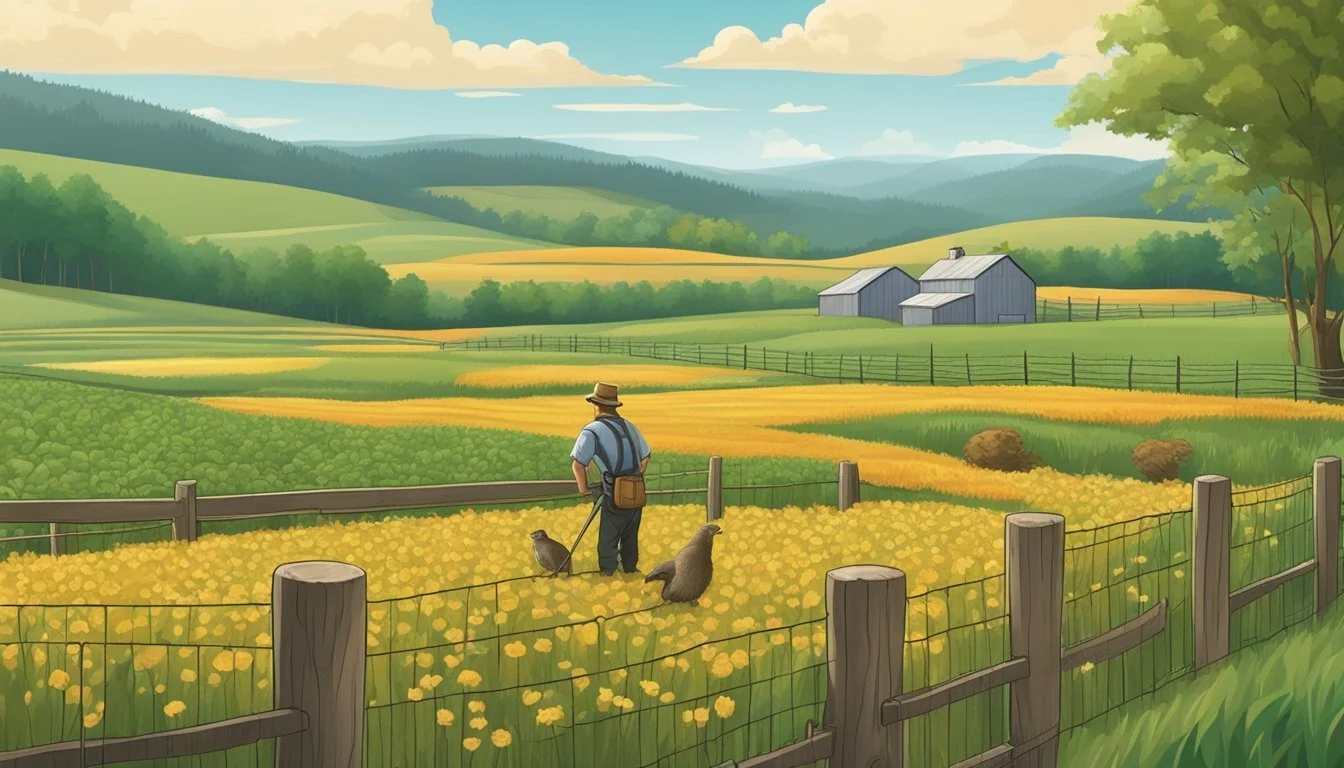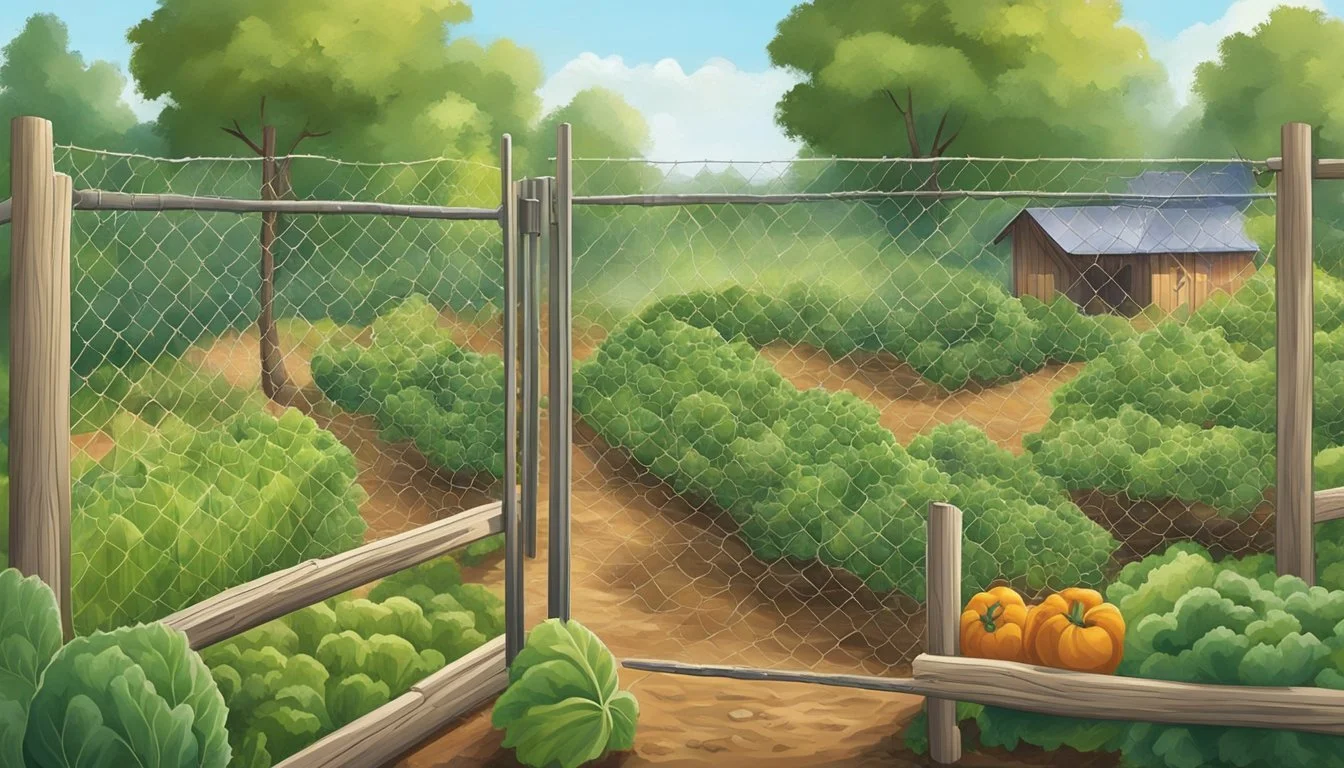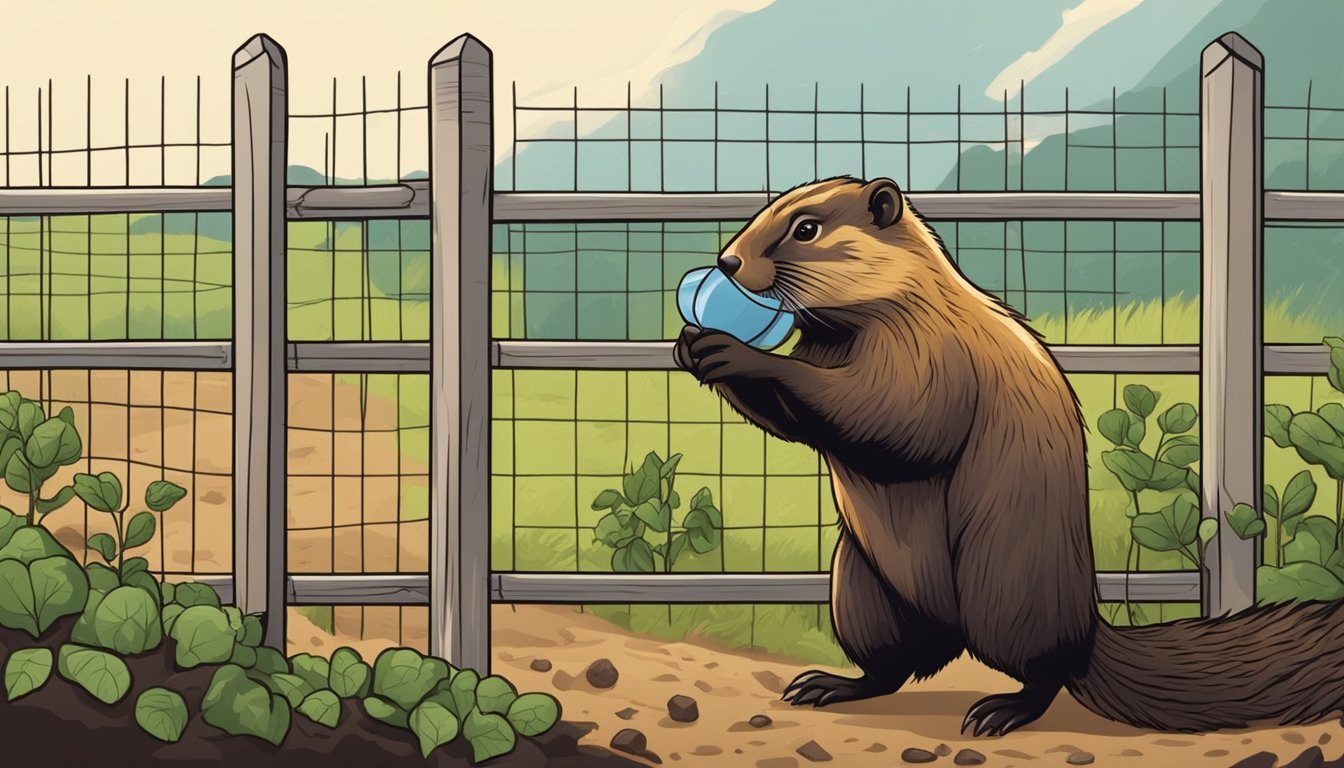Protecting Crops from Eastern Woodchuck
Effective Strategies for Farmers
The Eastern woodchuck, commonly known as the groundhog, can pose a significant threat to gardens and crops with its burrowing and feeding habits. As a large rodent found predominantly in the eastern regions of the United States and parts of Canada, woodchucks are known for causing extensive damage to vegetation. They possess a hearty appetite for a variety of crops and can swiftly decimate a garden if left unchecked.
Effective management strategies are crucial for protecting crops from these voracious feeders. A well-constructed fence serves as the first line of defense, forming a physical barrier that can deter the woodchucks from reaching the plants they seek. It is recommended to use a tight wire mesh that extends a minimum of three feet above ground and includes a section that is bent outward at an angle to prevent climbing.
While physical barriers play a key role in protection, understanding woodchuck behavior is also essential for effective control. Woodchucks are diurnal, being most active during daylight hours, and they often create burrows in proximity to abundant food sources. Therefore, monitoring the proximity of dens and implementing timely interventions can be pivotal in preventing crop damage by these robust rodents.
Understanding the Eastern Woodchuck
The Eastern woodchuck, also known as Marmota monax, plays a significant role in the ecosystem and agriculture due to its burrowing behavior and wide distribution.
Biology and Behavior
The Eastern woodchuck, referred to in scientific terms as Marmota monax, is a large North American rodent and a member of the squirrel family. Known for their intricate burrows and the ability to hibernate, woodchucks undergo a profound seasonal transition. They retreat into hibernation during the winter, resulting in a slowed metabolism and lower body temperature. Come spring, they emerge to feed and often attract attention due to conflicts with human agricultural interests.
Hibernation Period: Typically from October to March
Diet: Herbivorous, feeding on grasses, fruits, and vegetables
Habitat and Range
Woodchucks live in a variety of habitats including farmland, woodlands, and grasslands, favoring areas with well-drained soil. Their home ranges tend to be small, usually extending only 50 to 150 feet from their dens. These mammals are primarily found in the eastern parts of the United States, where they have adapted to both rural and suburban environments due to their ability to construct complex burrows. These burrow systems serve multiple purposes: shelter, storage, and protection from predators.
Den Structure: May reach depths of five feet and extend up to 60 feet in length
Geographical Range: Eastern United States and parts of Canada
Impact on Agriculture
The Eastern woodchuck, commonly known as the groundhog, poses significant challenges to agriculture through its feeding habits and burrowing activities, which lead to direct destruction of a variety of crops and compromise the integrity of farmland.
Damage to Crops and Farmland
Woodchucks feed extensively on crops, often targeting vegetables like beans, peas, lettuce, cabbage, and alfalfa. They have a penchant for devouring succulent produce and can obliterate generous portions of gardens. In addition to consuming vegetation, woodchucks can cause structural damage to farmland with their burrowing behavior. Their large, complex burrow systems can undermine the soil, leading to unstable ground and impaired plant growth. Woodchucks are also known to climb and cause damage to fruit trees, gnawing on the bark and branches, potentially harming their health and productivity. Information on woodchuck behavior and the damage they inflict can be found in this detailed document on Woodchuck Ecology and Damage Management.
Economic Implications
The impact of woodchucks on agriculture carries substantial economic implications. The loss of crops such as corn, which is a staple in the agricultural sector, translates to financial losses for farmers. The need to repair damaged farmland and implement control measures, such as specialized fencing as suggested by the University of New Hampshire Extension, adds to the economic burden. The persistent nature of woodchuck infestations can cause a long-term financial strain by reducing the overall yield and marketability of produce each season.
Legal and Safety Considerations
When addressing the protection of crops from the Eastern woodchuck, also known as the groundhog, it is crucial to be aware of state-specific laws and regulations, as well as safe handling and control practices to mitigate any safety concerns, especially regarding potential rabies transmission, which can be a concern dealing with woodchucks and other wild animals such as raccoons.
State Laws and Regulations
Each state may have its own set of laws and regulations concerning the handling of wildlife, which includes the Eastern woodchuck. In Wisconsin, for instance, woodchucks are protected by state law, with restrictions on hunting or trapping them. The regulations often reflect the state's ecological management objectives and public safety policies. It is imperative for individuals to consult with their state's wildlife agency or pesticide registration board to understand the permissible methods for controlling woodchuck populations on their properties.
Safe Handling and Control Practices
Considering the safety implications of handling wildlife, certain control practices are advised to avoid direct contact and potential disease transmission. For effective non-lethal measures, electric fencing has been suggested. If lethal methods are considered, it's important to be knowledgeable about the use of substances such as aluminum phosphide, ensuring its application is done in accordance to state regulations. Always take measures to protect oneself from potential risks, such as wearing gloves and washing hands thoroughly after any direct or indirect contact with wildlife.
Preventative Measures
Effective management of Eastern woodchuck damage requires a multifaceted approach. Selecting the right combination of physical barriers, repellents, and habitat modification techniques is crucial to protect crops.
Fencing Solutions
Electric Fences: Electric fences can be an efficient deterrent for woodchucks. They should be constructed with one wire 4 inches off the ground and a second wire 8 to 9 inches high. This setup takes advantage of the woodchuck's reluctance to receive an electric shock Dealing with Woodchuck Damage.
Chicken Wire and Mesh Fences: A robust fence to prevent woodchucks should stand at least 3 feet tall and be made of tight wire mesh. For added effectiveness, the top 12 inches can be left loose and bent outward, while the bottom should be buried 10 to 12 inches deep to impede burrowing Woodchuck Damage and Control.
Repellents and Deterrents
Commercial Repellents: Various repellents that create an unpleasant environment for woodchucks can be used, although their effectiveness may vary. One example is fox urine, which acts as a natural fear-inducing agent for these rodents.
Home Remedies: Some individuals may opt for a DIY approach, using items like a garden hose to flood burrows periodically, but consistent application is key to maintaining effectiveness.
Cultural Controls
Habitat Alteration: Reducing the appeal of the environment can be a sustainable control method. Removing brush piles and keeping the grass cut short make the area less attractive to woodchucks seeking shelter and food.
Frightening Devices: While not always long-lasting, visual and noise devices can intermittently deter woodchucks. However, these animals can become accustomed to such tactics if they're not changed regularly.
Control and Removal Methods
The Eastern woodchuck, commonly referred to as the groundhog, can be a persistent nuisance to crops and gardens. Effective control and removal methods are paramount to protect agricultural efforts, integrating tactics from live trapping and humane relocation to employing exclusion techniques and utilizing chemical and physical controls.
Trapping and Relocation
Trapping remains one of the most traditional and direct approaches for woodchuck control. Live traps like cage traps should be baited with fresh fruits or vegetables. The optimal placement for these traps is usually close to the burrows or feeding paths. Relocation of these animals should always follow local wildlife regulations to ensure humane treatment and ecological balance.
Exclusion Techniques
An ounce of prevention is worth a pound of cure, and this is particularly true when safeguarding crops from woodchucks. Fencing can provide a reliable barrier and should be constructed to include a bend in the top facing outward to prevent climbing, and buried at least 12 inches underground to hinder burrowing. Electric fencing is reported as particularly effective, recommended to maintain one wire 4 inches off the ground and a second wire at 8 to 9 inches high to prevent woodchucks from climbing or digging under.
Chemical and Physical Controls
When non-lethal methods are insufficient, certain chemicals and toxicants may be employed as a last resort, keeping in mind that the use of such materials should comply with local wildlife and pesticide regulations. Aluminum phosphide is a chemical used for fumigating woodchuck burrows, but its application is subject to specific state regulations. Other control methods include gas cartridges which release carbon monoxide or other slow-burning chemicals to humanely euthanize the animals within their burrows. It is crucial to follow all safety guidelines for application and consider the potential effects on other non-target animals like squirrels, rats, skunks, and weasels that may share the habitat.
Monitoring and Maintenance
Effective monitoring and maintenance are crucial for gardeners and orchard keepers to protect their crops from damage by Eastern woodchucks. Through diligent assessment, one can identify the extent of woodchuck damage, enabling the application of long-term management strategies to mitigate future risks.
Assessment and Damage Identification
Gardeners should routinely inspect their gardens, fields, and orchards for signs of Eastern woodchuck activity. Damage identification involves looking for chewed stems, gnawed bark, and eaten fruits, which are indicators of their presence. Woodchucks can also be detected by the presence of burrow entrances, typically found near food sources like plants, young trees, and shrubs. It's important to differentiate woodchuck damage from that caused by raccoons or squirrels, as they often frequent similar habitats but may require different management strategies.
Long-Term Management Strategies
For long-term management, incorporating a variety of control measures is key. Fences need to be at least 3 feet high and made of heavy poultry wire or 2-inch mesh woven wire with an overhang to prevent climbing, and buried deep to discourage digging. Electric fencing is recommended, with one wire 4 inches off the ground and a second at 8 or 9 inches high. Further monitoring includes periodically checking fences for breaches or signs of burrowing, reinforcing weak spots, and maintaining clear surroundings to reduce cover for woodchucks. Regularly consulting with experts and staying informed on sustainable management practices ensure that gardeners maintain an upper hand in protecting their cultivation from these persistent creatures.
Living with Wildlife
As communities grow and wild habitats intersect with human developments, understanding and implementing strategies for coexisting with wildlife, such as the Eastern Woodchuck, becomes crucial. Education and awareness are vital in fostering a harmonious relationship between humans, their domestic animals, and wildlife.
Coexistence Strategies
Habitat Modification: To reduce the chances of woodchucks damaging gardens or property, modifications can include:
Fences: A buried wire fence with an underground portion angled outwards can deter woodchucks.
Repellents: Though results vary, certain repellents may be somewhat effective.
Natural Deterrents: Domestic pets such as dogs can naturally deter woodchucks from encroaching on property. Keeping horses and other livestock may also help through their presence, which can disrupt a woodchuck's sense of security.
Community Education and Awareness
Informational Campaigns: By informing the community about the ecological effects of woodchucks, residents can learn the importance of these animals to the environment, such as soil aeration.
Workshops and Resources: Providing resources on how to protect property from woodchuck damage empowers garden and property owners to take preventative measures without harming the wildlife.
Case Studies and Success Stories
Several case studies exemplify the successful management of the Eastern woodchuck (Marmota monax), a species known for causing significant crop damage. A Penn State Extension guide provides a comprehensive approach detailing woodchuck biology and effective damage control methods to protect valuable crops.
In one notable example, a Pennsylvania farm implemented a burrow fumigation strategy, following humane trapping methods. The farm reported a reduction in woodchuck numbers and subsequent decrease in crop damage, indicating a positive outcome for both the farm's yield and financial health.
The American Farmland Trust features soil health as another angle for managing pest issues, including those posed by woodchucks. By improving soil structure and ecosystem balance, farmers have noted a general improvement in their ability to mitigate pest damage. Soil health practices have led some farmers to experience not only a reduction in pest incursions but also an increase in crop yields.
Burrow Fumigation: Proven to reduce woodchuck presence.
Soil Health Improvement: Enhanced pest resistance; crops like row crops and almonds saw a marked increase in yields.
It's crucial to underscore the importance of integrated pest management (IPM) strategies, emphasizing crop rotation, habitat modification, and exclusion techniques. Through such IPM approaches, farmers have strikingly limited the impact of woodchucks, safeguarding their crops without causing undue harm to the ecosystem.
Frequently Asked Questions
The following section addresses common queries related to deterring Eastern woodchucks from agricultural areas, ensuring that farmers and gardeners are equipped with practical and humane solutions.
How can farmers effectively deter groundhogs from their fields?
For farmers looking to keep groundhogs away, one efficient method is employing fencing with an overhang to discourage climbing, as well as burying the fence to prevent digging.
What are some proven methods to safeguard gardens against woodchuck damage?
Gardeners often construct tall wire mesh fences with the mesh bent at an angle at the top to deter woodchucks from climbing, and the bottom mesh extended outwards beneath the soil to halt their burrowing.
Which plants have been shown to naturally repel groundhogs?
Although specific plant-based repellents aren't often mentioned, an integrated strategy including a variety of deterrents is recommended. No single type of plant has been conclusively proven to repel groundhogs.
In what ways can physical barriers be used to protect crops from woodchucks?
Physical barriers like electric fencing with wires positioned at key heights can create an effective deterrent to protect crops from woodchuck invasions.
Are there humane repellents that can prevent woodchucks from eating plants?
There are various humane repellents on the market that can prevent woodchucks from eating plants. These usually involve taste aversion or olfactory deterrents, but it's vital to ensure they're safe for the environment and other wildlife.
What strategies do gardeners implement to minimize groundhog burrowing near cultivation areas?
Gardeners may decrease the likelihood of groundhog burrowing by maintaining clear zones around cultivation areas and by using strategies outlined by the Pennsylvania Game Commission, such as proper fencing and the removal of attractants.


